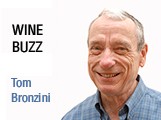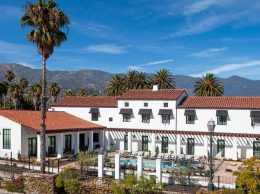Santa Barbara’s Urban Wine Trail: too big to fail to organize
IN THIS ARTICLE
- Columns Topic
- Tom Bronzini Author
By Tom Bronzini Friday, September 21st, 2012
A look at the Santa Barbara Urban Wine Trail’s latest map of 17 locations where you can sample wines from the county’s vineyards gives a hint of why the group decided this year to formally organize as a 501(c)(6) mutually beneficial nonprofit.
“It got to a point where communication wasn’t working out as well and we weren’t being as effective as we could be because of the size of the group,” Ryan Carr, board chairman of the Santa Barbara Urban Wine Trail, told me.
What used to take a few phone calls to agree on joint advertising became slow and cumbersome as Wine Trail membership grew from an informal alliance of four in 2006 to 17 wineries and tasting rooms today. Carr, owner and winemaker at Carr Vineyards & Winery, said the group’s growth in recent years tipped the scales toward a formal organization.
Members now pay dues and in July organized a kickoff event called Passport Weekend. For $50, visitors could taste at any of the 17 Santa Barbara Urban Wine Trail locations all weekend. They got a discount on wine purchases, a logo glass and transportation between tasting rooms by pedicabs and open-air buses.
Carr said organizers were not sure how many people they could handle at the event, but the turnout of about 200 was easy to manage. “We were able to move people around the downtown area without any serious hiccups,” he said. “Nobody was complaining about getting stuck at a facility and not being able to get to the next one.” He said he is pretty confident that the Urban Wine Trail can boost the attendance next summer to closer to 400 or 500.
Carr said members are planning an event for next Presidents Day weekend, Feb. 15-17. The main focus will be a syrah seminar, with five or six winemakers discussing the different ways they make the wine, the grape-growing climate and the things they love about syrah.
An improved Urban Wine Trail map and an upgraded website are key marketing tools of the organization. At the website, urbanwinetrailsb.com, you can click on each location on the map for tasting information, and from there see a link to the winery’s own web address.
You really do need a map to find all 17 Urban Wine Trail locations, from the city’s Funk Zone near the beach, to downtown near State Street, the non-touristy east side and the gateway outpost in Summerland.
With map in hand, I toured the Santa Barbara Urban Wine Trail on a couple of recent Fridays. The destinations vary from the city’s oldest winery, Santa Barbara Winery, established in 1964, to the Wine Trail’s newest tasting room, Pali Wine Co., across Yanonali Street in a new building in the Funk Zone.
The wine companies range in size from Santa Barbara Winery (40,000 to 45,000 cases annually) and Jim Clendenen’s Au Bon Climat (30,000), to boutique producers of small lots: Whitcraft Winery and Municipal Winemakers (1,000 cases).
Some of the destinations give an idea of the transformation of the city’s Funk Zone. Oreana Winery occupies a former tire center; Municipal Winemakers took over a former SCUBA diving shop and Kalyra Winery’s Tiki-style tasting room was formerly a men’s hair salon.
On the eastern side of the city, Carr Winery is remarkably atmospheric for its location in a remodeled 1940s Quonset hut. The most scenic nod must go to the Conway Family Wines Deep Sea tasting room, with its panoramic ocean and coastal views and outdoor deck for sipping on Stearns Wharf.
Jaffurs Wine Cellars, which offers seven syrahs from six vineyards, was the first to build a new winery in Santa Barbara in 2000 rather than occupy an existing building. Whitcraft Winery stresses the human touch; no machines are used during its winemaking.
Visitors can sometimes see wines being made at seven of the locations: Santa Barbara Winery, Oreana, Carr, Jaffurs, Sangius Wines, Silver Wines and Whitcraft. The other 10 are tasting rooms only.
The wine trail features wines mostly from the county’s vineyards. Some wineries source from their own vines or personally manage the farming of grapes that they buy. Wines can be found from some of the county’s top vineyards, among them Bien Nacido, Stolpman Vineyards in Ballard Canyon, Bordeaux varietals from Happy Canyon and pinot noirs from the Santa Rita Hills.
Tom Conway, manager of the Deep Sea tasting room, said the wine trail does not aim to take away business from Central Coast wineries, “but certainly to promote the fact that we do have our own wine-tasting options right here in Santa Barbara.”
Grassini Family Vineyards opened its tasting room on Anacapa Street just in time to get on the Urban Wine Trail map and participate in Passport Weekend.
“As a new business, as a new winery I don’t think we could survive without being on that map,” general manager Katie Grassini told me at the tasting room. “We’ve got so much foot traffic coming in, and I think it’s really due to that.”
• Contact wine columnist Tom Bronzini at tbronzini@verizon.net.












